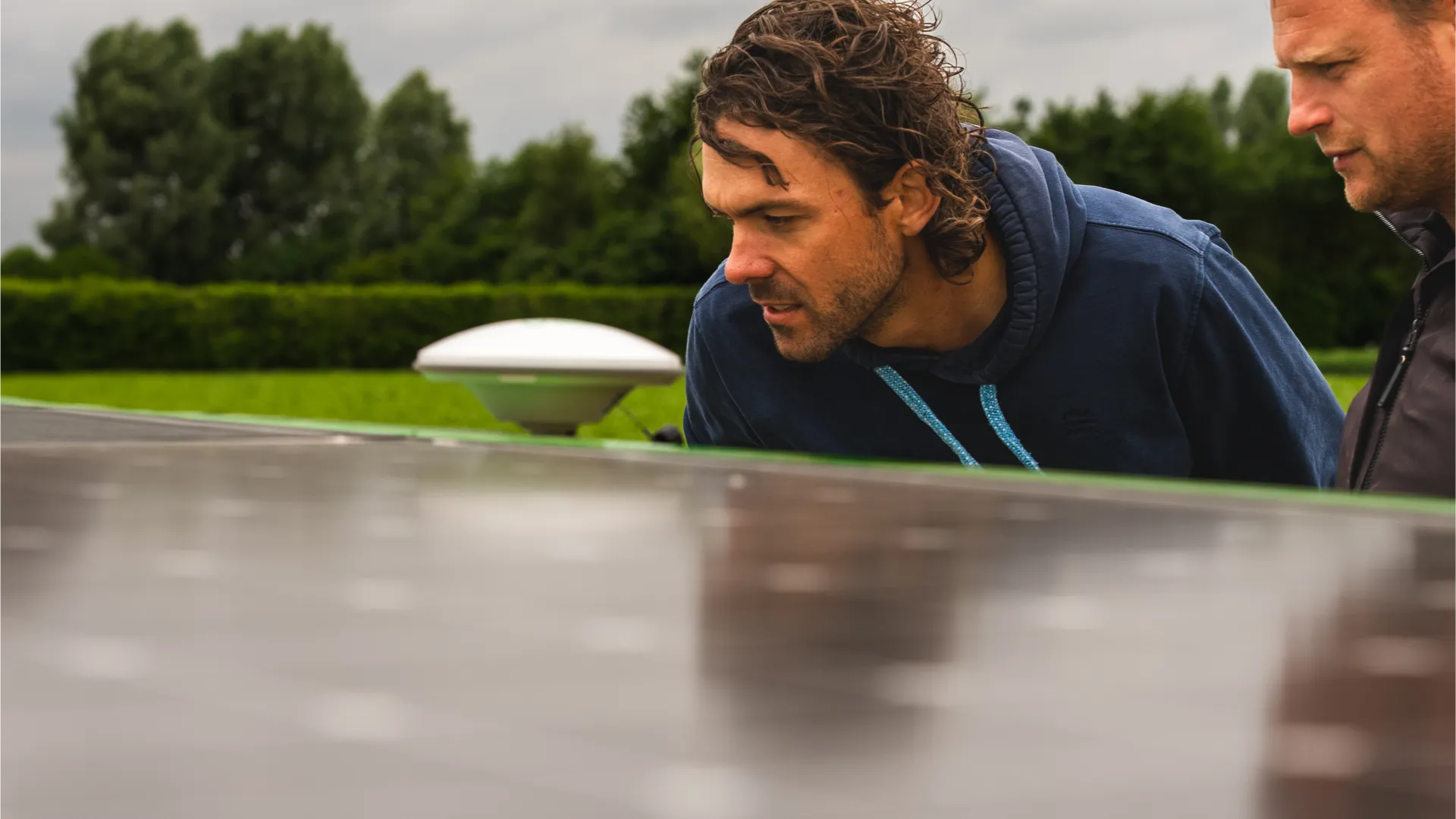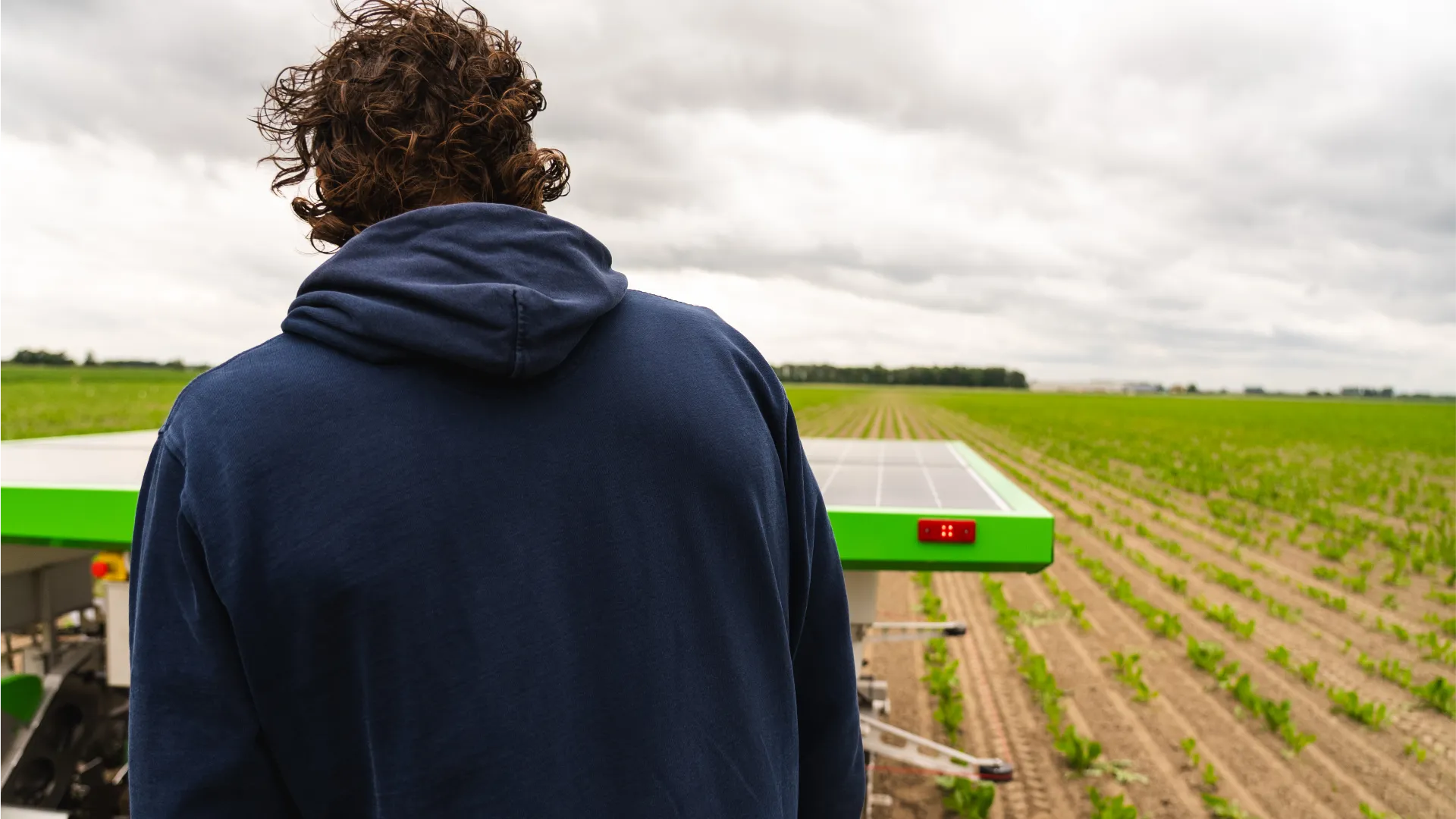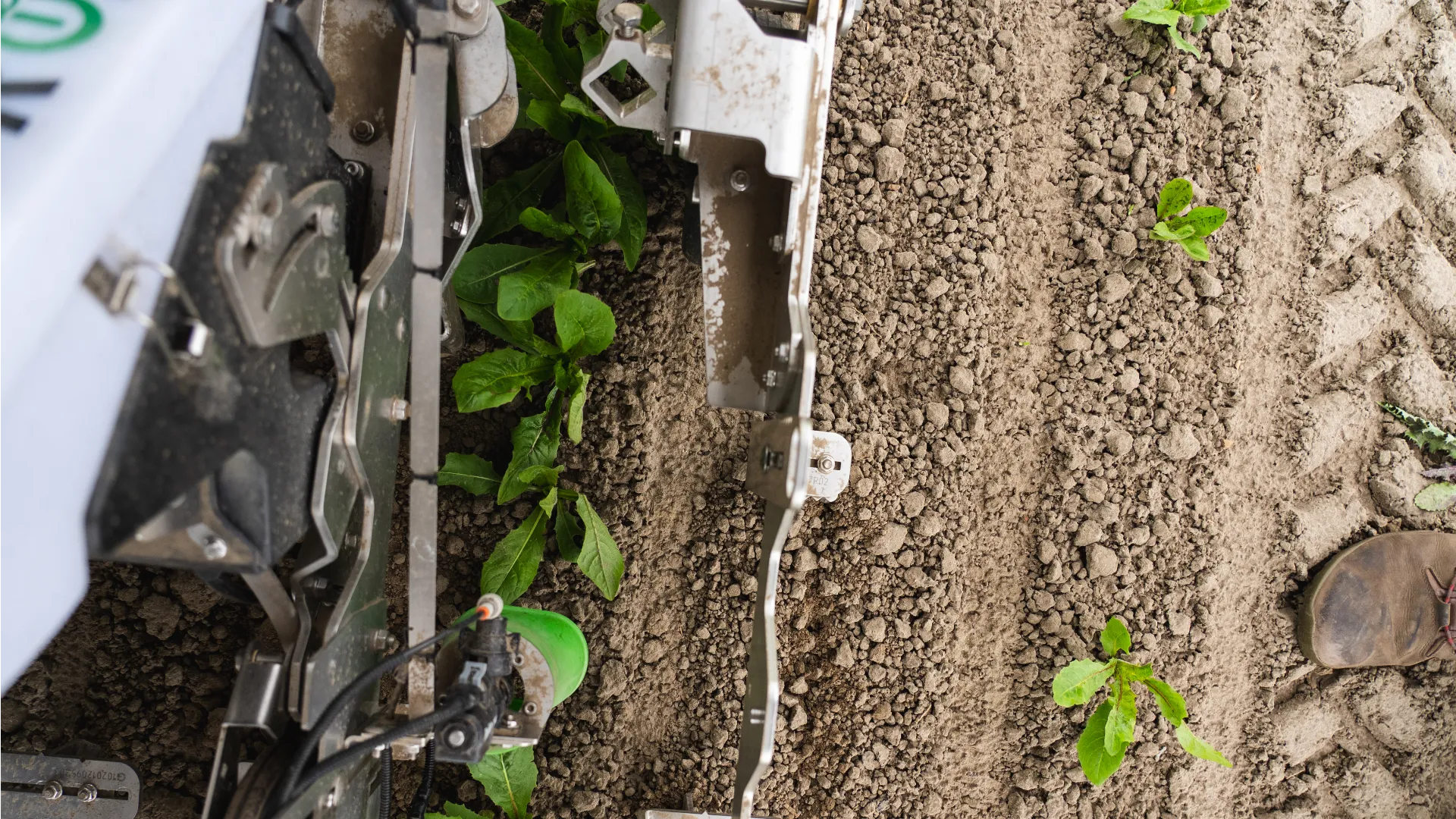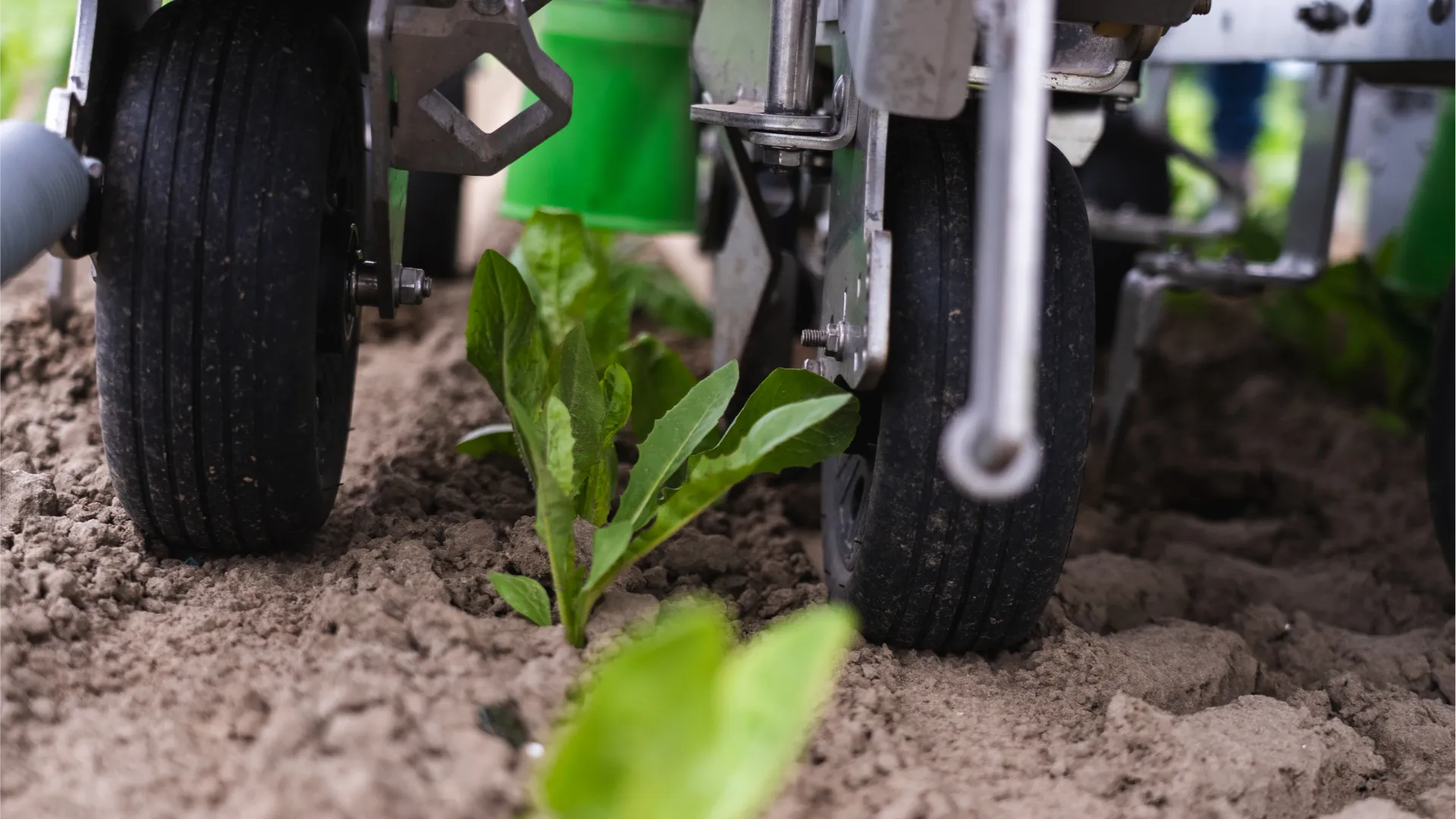For arable farmer Jack Simons in the Netherlands, the future of his chicory crop came down to a simple choice: stop growing it or innovate in a significant way. Faced with diminishing herbicide options and mounting weed pressure, Jack chose to innovate. His decision to invest in a FarmDroid FD20 has not only secured his chicory cultivation but has also laid the groundwork for a more sustainable and efficient future for his entire 60-hectare farm.


The challenge: A losing battle with weeds
Jack runs a 60-hectare farm, cultivating seed potatoes, sugar beets, onions, wheat, and chicory. For years, the biggest challenge in growing chicory was weed control. “Over the last ten years, we lost like five or six herbicides,” Jack explains, noting that this made an already difficult task nearly impossible. The situation became so dire that they were spending weeks on manual weeding without ever achieving a completely clean field. This struggle forced him to a crossroads. “I had two options in chicory: to stop growing chicory or continue and really innovate,” he recalls. With a passion for the crop and a desire to farm for the next 30 years, the choice was clear.
First impressions: Precision from day one
Jack’s first experience with the FarmDroid was during the seeding of 12 hectares of chicory. He was immediately impressed by the robot’s precision. “My first impression of the FarmDroid was that it seeded really precise,” he says. “Exactly every ten centimeters, there was a seed. Which is really proper”.

The robot’s autonomy also quickly proved its value. The seeding process for the entire 12 hectares was completed in just four and a half days, running continuously. “It never stopped, it could really run 24/7,” Jack notes, expressing his surprise that the solar-powered batteries kept the robot going all through the night. He calls it a “reliable machine” you can trust to work on its own.
A New Strategy for Weed Control
Once the seeds were in the ground, the FarmDroid began its primary task: weeding. Jack observed it moving accurately through the rows from the very beginning. Jack also utilized the FarmDroid’s +Spray system to apply herbicides directly on the row during seeding. While he notes there was a small learning curve in getting the dosage right, the system worked flawlessly afterward. He sees a powerful synergy in combining mechanical weeding with chemical applications. “If you use the FarmDroid in combination with chemicals,” he argues, “the weed seeds in the soil are getting reduced faster”.

Looking Ahead: Expanding the Robot’s Role
After a successful first year with chicory, Jack is already making plans to expand his use of the FarmDroid. “Next year I want to use the FarmDroid in both chicory and sugar beets,” he states. The plan is to increase from 12 to 15 hectares of chicory and add 9 hectares of sugar beets to the robot’s workload.
The goal is not just to manage weeds in a single season but to fundamentally improve the soil for future crops. “I think I can manage to reduce the weeds more by using it in both crops,” Jack concludes. For him, the FarmDroid is more than just a machine; it’s the key to a sustainable and profitable future in farming.
